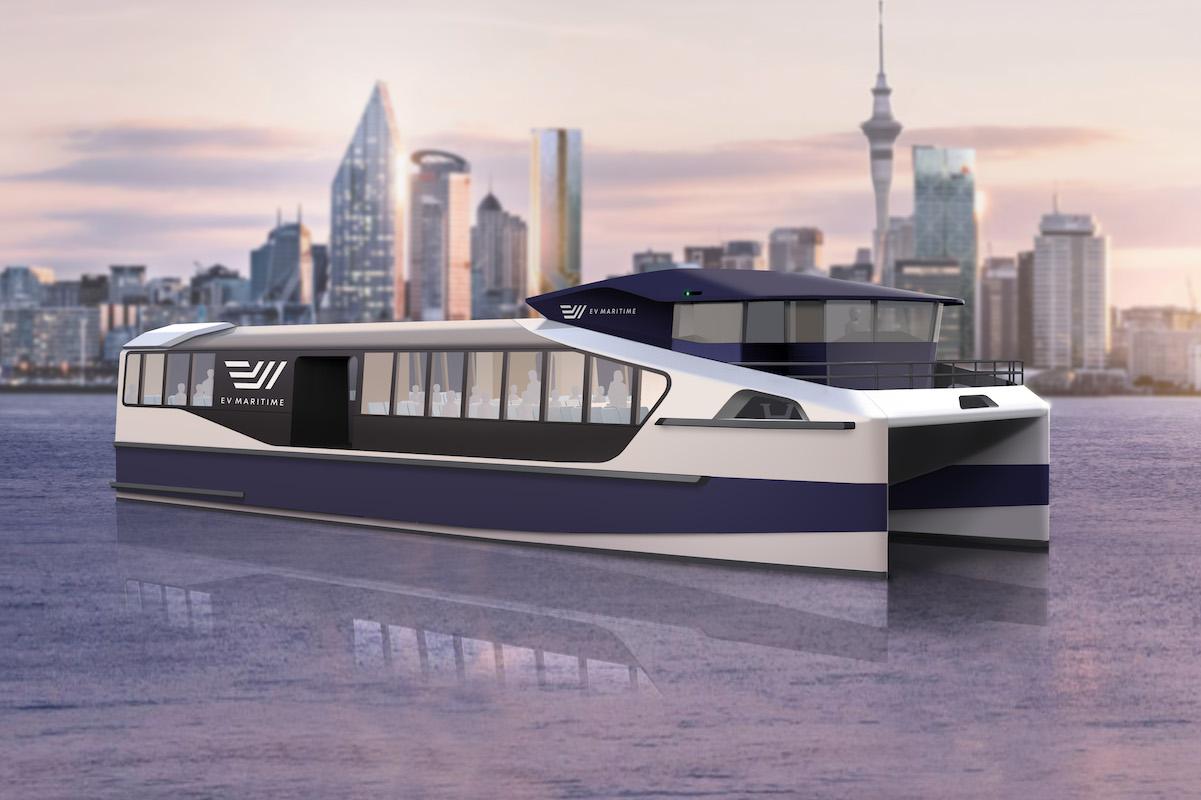What's New
1 June, 2021
Auckland ferries ‘could be all-electric by 2030’

The trial of two electric ferries on Auckland Harbour could start in 2023 if funding to build the boats comes through in the next couple of months, says EV Maritime chief executive Michael Eaglen.
EV Maritime has joined with Fullers 360 and Vector in an application to the government’s “shovel-ready” fund. If the money is forthcoming, it would take around two years to construct the purpose-built boats.
The electric ferries would be trialled across all Auckland routes, including to Devonport, Bayswater, Birkenhead, Hobsonville, Gulf Harbour and Pine Harbour, Eaglen said.
EV Maritime had been designing the ferries for the past three years, with the aim of creating a fleet of standardised boats suited specifically to Auckland conditions and customer needs. Charging docks would be located at Devonport and other ferry wharves so boats could charge when they were loading and unloading passengers.
“They are not river boats, but coastal-capable, all-weather passenger craft,” Eaglen said. The two trial boats would be able to reach speeds of 25 knots and have seating for around 150, with overall passenger capacity of 200.
Special attention had been paid to the efficient offloading and onloading of people and bikes. The rise of cycling and electric bikes had been a major influence on the design, with large indoor racked areas planned.
Electric-bike use had extended the scope of ferry transport in Auckland, Eaglen said. For example, the Devonport to Auckland run was no longer used only by “lawyers working in Shortland St”, but people who had jobs further afield in Ponsonby or Newmarket, who could complete their commute on an electric bike without arriving at work “all hot and sweaty”.
The era of electric-ferry transport had arrived in Auckland, Eaglen said, with the need to replace many of Fullers’ ageing fleet coinciding with the acceleration in battery technology. The batteries needed to power ferries had become smaller, lighter and longer lasting.
The in-service charging at ferry wharves meant a boat could now continuously ply a route such as Devonport-Auckland, without needing to be withdrawn for charging.
A significant part of a trial would centre on how to best coordinate running an electric ferry fleet between the various terminals and pick-up points around the city.
“It’s a very exciting time – Auckland could be operating a completely de-carbonised fleet by 2030,” Eaglen said.
While refusing to say how much the EV Maritime boats would cost, he said electric boats cost 50 to 100 per cent more than conventional boats. But they were like electric cars – expensive to buy, but cheaper to run.
While the priority was to maximise the currently operational ferry runs, the sky was the limit in the future, with the possibility of having services to Shoal Bay or even the beaches of Takapuna, Milford or Browns Bay if difficult berthing conditions created by the exposed coastline could be overcome.

Please consider supporting The Devonport Flagstaff by clicking here:
